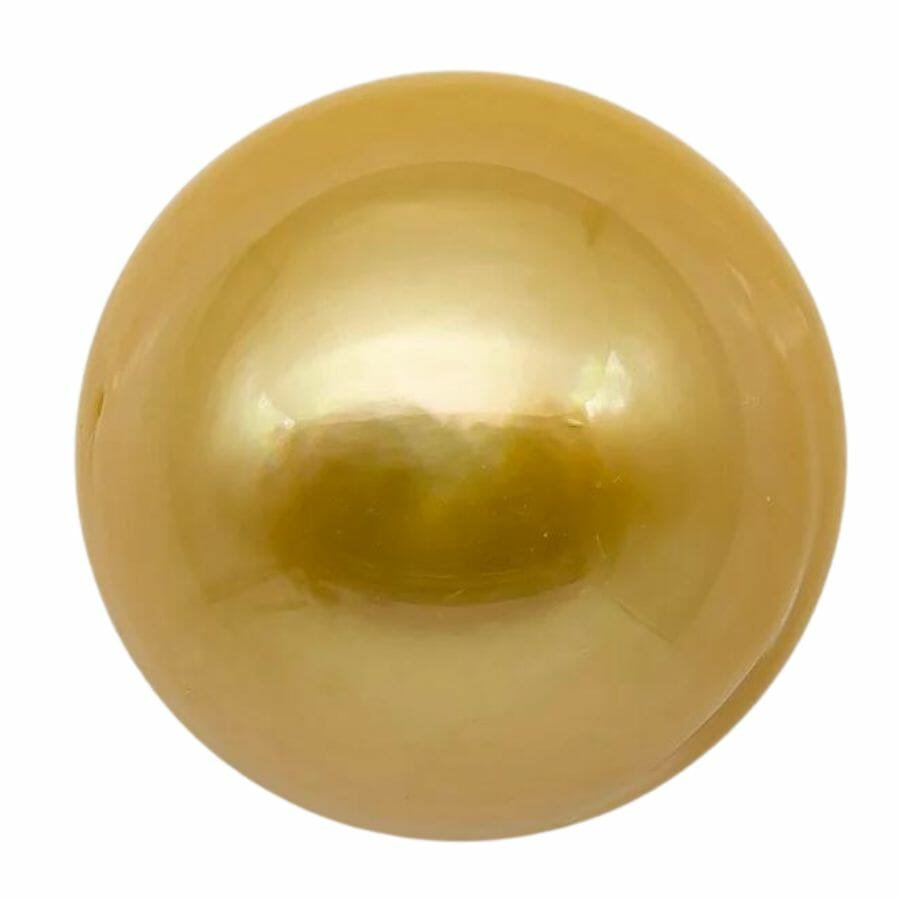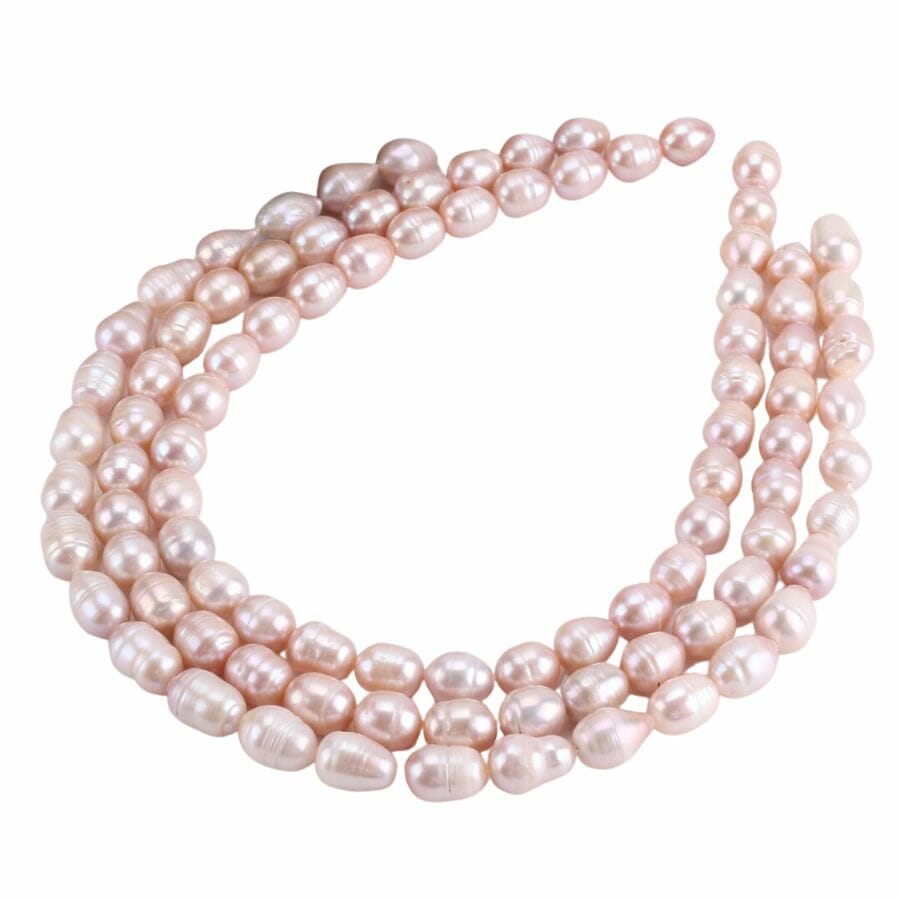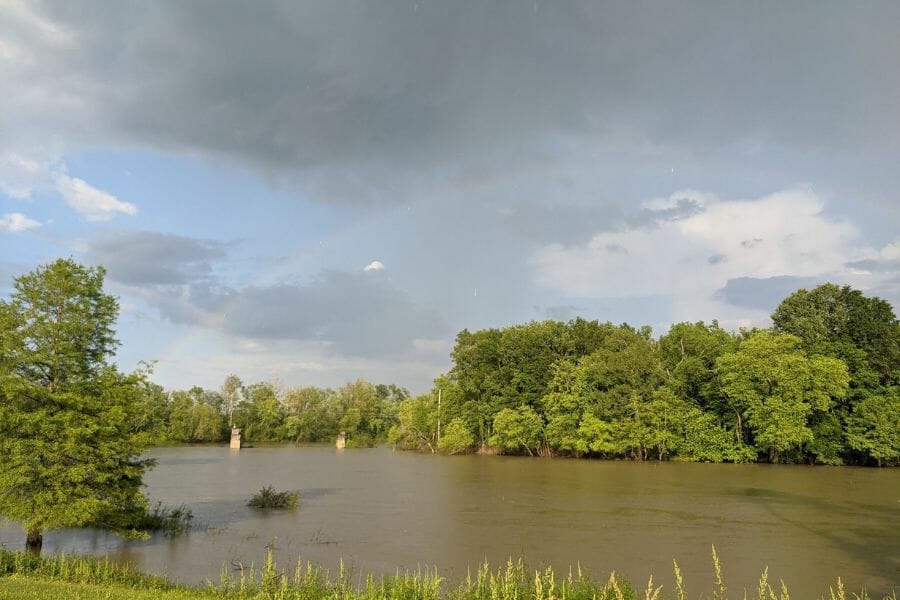Pearls are truly special because they’re created by living creatures called mollusks. These beautiful gems can be found in both freshwater rivers and vast oceans across the globe.
There are simple methods on how to identify pearls to make sure you’ve got the real deal. If the idea of searching for your own pearls sounds like an adventure, you can learn some neat and simple tricks that can help you find them.
From their unique origins to their diverse locations, let’s embark on this exciting journey to uncover the secrets of pearls!
What pearls are
Pearls are unique and special because they’re the only gemstones that come from animals. These shiny treasures are created inside mollusks when a tiny irritant gets trapped inside.
To protect itself, the mollusk covers the irritant with layers of a smooth, shimmery substance called nacre. That’s how pearls are formed! Over time, these layers build up, turning the irritant into a beautiful pearl.
In the United States, you can find pearls in both freshwater and saltwater areas. Places like Tennessee and the Mississippi River basin are known for their freshwater pearls.
The different types of pearls
While many are familiar with the classic shimmering white pearls, there’s a vast spectrum of pearl types waiting to be explored. Each type has its unique story and beauty, shaped by the environment and the mollusk that crafted it.
Akoya Pearls

Hailing from the Akoya oyster, known as Pinctada fucata, these Akoya pearls stand out because of their stunning luster. Most of these pearls are cultivated in Japan and China, making them unique compared to other pearl types.
Their colors are a sight to behold, commonly found in shades of white or cream. But what truly sets them apart are the lovely overtones of rose, silver, or cream that dance on their surface.
South Sea Pearls

South Sea pearls are truly a gem of the ocean! They come from the white-lipped oyster, known as Pinctada maxima. These pearls call the waters of Australia, the Philippines, and Indonesia their home.
What makes them really stand out from other pearls is their impressive size. They are among the biggest pearls you can find. Their colors are simply breathtaking, ranging from pure white to rich cream, and even a radiant golden hue.
Tahitian Pearls

Tahitian pearls are like the mysterious treasures of the deep sea! They come from the black-lipped oyster, known as Pinctada margaritifera. Even though they’re named after Tahiti, they’re actually found in the waters around French Polynesia.
The colors of these pearls make them stand out! Unlike other pearls, Tahitian pearls boast dark hues that can range from a sleek gray to a deep black. They also have amazing overtones of green, blue, or rose.
Freshwater Pearls

Freshwater pearls are mostly cultured in peaceful freshwater lakes and ponds, with China being a top producer.
Now, here’s the fun part: these pearls have a lot of variety. They can be big or small, round or uniquely shaped, and they dazzle in a rainbow of colors.
The main hero behind these pearls is the triangle shell mussel, but sometimes other mussels join the party too. Compared to ocean pearls, freshwater ones offer a diverse playground of shapes and shades.
Baroque Pearls

Instead of the usual round shape we associate with pearls, Baroque pearls march to their own beat with unique, irregular shapes. This can range from slight bumps to wild, wavy forms.
Every Baroque pearl tells its own one-of-a-kind story. These pearls can pop up anywhere, both in freshwater and saltwater environments.
Whether they’re cultured by humans or formed naturally in mollusks, their distinct shapes make them stand out.
Blister Pearls

Blister pearls are truly special gems with a twist! Instead of forming fully inside a mollusk, they grow against the inside shell.
This unique growth spot gives them a distinct look: they’re dome-shaped on the front but have a flat back, kind of like a tiny shield.
While many pearls are round and detached, blister pearls remain attached to the shell, showcasing their half-formed beauty. They can be found in various mollusks in both freshwater and saltwater habitats.
Keshi Pearls

Keshi pearls are accidental byproducts of the pearl culturing process. They might be small, but what they lack in size, they make up for in sparkle, often boasting a high luster that captures the eye.
Their shape can be a bit irregular, adding to their unique charm.
You can find Keshi pearls in both freshwater and saltwater environments, wherever pearls are cultured. Their unplanned creation and distinct look make them stand out.
Seed Pearls

Seed pearls are like the tiny stars in the vast universe of pearls! They’re super small, often measuring less than 2mm in size. But don’t let their size fool you; these little gems are packed with charm.
Historically, they were used in intricate jewelry designs and delicate artwork. These miniature pearls can be found in various mollusks, both in freshwater and saltwater environments.
Their petite size and delicate beauty make them perfect for detailed work.
Coin Pearls

Their name says it all: coin pearls are flat, round, and look a lot like coins. What’s super cool about them is their distinct shape, different from the more common spherical pearls.
These special pearls are grown in freshwater settings, making them a freshwater gem. Their unique flat shape and shimmering surface make them a popular choice for stylish jewelry.
Where to find pearls
There are many locations in the United States with pearls just waiting to be discovered. Here are the five best spots in the U.S. where these glistening gems can be found.
Tennesee River

The Tennessee River flows beautifully through the southeastern United States, creating a haven for adventurers and nature enthusiasts. But here’s a fun tidbit: it’s also a hotspot for pearl hunting!
This river is rich in freshwater mussels, which, in the right conditions, produce stunning pearls. The types of pearls you can find here vary in shape and color, from the classic white to captivating shades of pink and even lavender.
The Tennessee River’s unique environment provides the perfect conditions for these gems to thrive. So, if you’re ever in the area, it’s worth exploring its waters and maybe even discovering a shimmering treasure of your own!
Mississippi River

The Mississippi River is one of America’s grand waterways, stretching majestically from Minnesota to the Gulf of Mexico. Along with its rich history and diverse ecosystems, this river holds another treasure: pearls!
Thanks to the abundance of freshwater mussels in its waters, the Mississippi River becomes a delightful spot for those seeking these radiant gems.
While exploring the river, you might come across pearls that vary in color, from classic shades of white and cream to more unique hues like pink.
San Angelo, Texas

San Angelo is a vibrant city with a mix of rich history and modern flair. Located in the heart of the Lone Star State, it’s also a spot where you can find pearls, particularly in the waters of the Concho River that flows gracefully through the city.
The freshwater mussels in the river are known to harbor pearls that can range from classic whites to unique pinks and even purples.
The riverbanks and local parks are often buzzing with locals and visitors alike, trying their luck in discovering these shimmering treasures.
Black River, Arkansas

The Black River is a flowing gem that meanders through lush landscapes, drawing nature lovers from near and far. This river isn’t just known for its serene beauty but also as a spot teeming with freshwater mussels.
These mussels, in the right environment, carry radiant pearls. Seekers might find pearls ranging from soft whites to lovely shades of pink, each with its unique luster.
The Black River’s calm waters and surrounding greenery make it an ideal place for a relaxing day of exploration.
Delaware Bay

Delaware Bay is a dynamic meeting point between the Delaware River and the Atlantic Ocean, offering a mix of freshwater and saltwater environments.
This unique blend makes it a hotspot for various marine life, including mollusks that can harbor pearls.
If you’re wondering where to find pearls in real life, Delaware Bay is an exciting place to start your adventure. The pearls here can range from soft hues of classic white to mesmerizing shades of blue and gray, reflecting the bay’s diverse ecosystem.
How to find pearls
From diving in ocean depths to exploring calm riverbeds, the methods for finding pearls are as diverse as the pearls themselves. Each approach offers its own set of adventures and rewards.
Ensure your safety
Hunting for pearls is an exciting adventure, but safety should always come first! First, always let someone know where you’re going and when you plan to return. This way, someone is aware of your whereabouts.
Wear appropriate footwear, like water shoes, to protect your feet from sharp objects or slippery surfaces. If you’re diving or snorkeling, ensure your equipment is in good condition and you’re familiar with its use.
Stay aware of your surroundings, especially water currents and wildlife. And remember, always have a buddy with you; it’s safer and more fun to share the experience.
Look for the right mussels
If you’re curious about how to find pearls in the United States, it’s important to know which mussels to watch out for. Freshwater mussels, especially those in the family Unionidae, are your best bet.
These mussels thrive in clean, flowing waters like streams, rivers, and lakes.
When searching, look for mussels with a thick shell, as they are more likely to house pearls. Gently open the mussel to check inside, but always handle them with care to avoid harming these vital creatures.
Some states have regulations about collecting mussels, so always check local laws before you begin.
Choose the right season
Pearl hunting can be a thrilling adventure, especially if you time it right! In the United States, the best time for pearl hunting is during the warmer months, from late spring to early fall.
During this period, mussels, which can potentially house pearls, are more active and easier to locate in freshwater areas like rivers, streams, and lakes.
It’s essential to be prepared: wear comfortable shoes, bring along a small mesh bag to collect mussels, and always remember to handle them gently.
Look for clusters of mussels
If you’re on a mission to uncover pearls in the United States, focusing on clusters of mussels can lead you to success! Mussels tend to group together, and finding these clusters can increase your chances of discovering a pearl.
Start by exploring freshwater rivers, streams, and lakes, as these are common habitats for mussels. Gently feel the waterbed with your hands or a simple tool, like a rake. When you find a cluster, it’s like hitting a jackpot spot!
How to identify pearls once you find them
Once you have something shimmering in your hand, it’s crucial to know if it’s a genuine pearl. There are specific methods and tests that can help you determine its authenticity.
What pearls look like on the outside
Pearls are unique gems with a variety of exterior features. Their outer appearance can range widely in color, texture, and luster.
Luster

Natural pearls have a unique beauty that’s truly mesmerizing. Their exterior exhibits a deep, iridescent glow, thanks to the multiple, thin layers of nacre.
This luster is a play of light as it reflects and refracts off these layers, creating a captivating dance of colors.
From soft pinks to rich blues and greens, the range of hues can vary, but the deep shine remains a common trait. This brilliant sheen gives natural pearls their timeless appeal and distinguishes them from other gems.
When you come across a gem with such a radiant glow, it’s often a sign that you’ve found a genuine pearl.
Shape and texture

Natural pearls have a charm that comes from their unique shapes and textures. Unlike many cultured pearls which can be perfectly round, natural ones often showcase a range of interesting shapes.
It’s not uncommon to find them slightly irregular, baroque, or even oval-shaped. These distinctive forms add to their allure and authenticity.
In addition to their shapes, natural pearls can also possess fascinating surface textures. You might notice minor imperfections such as tiny bumps, ridges, or little pits. These aren’t flaws, but rather markers of their genuine and organic origin.
Color

When considering what pearls look like on the outside, one of the first things you should look at is their color. Natural pearls display a wonderful spectrum of hues. They might shimmer in classic whites and creams or glow in soft rose tones.
For those seeking something bolder, natural pearls can also surprise you with shades of gray or even deep black.
What’s interesting is that a pearl’s color isn’t just random; it’s influenced by factors like the type of mollusk that produced it, the specific waters it lived in, and even its diet.


